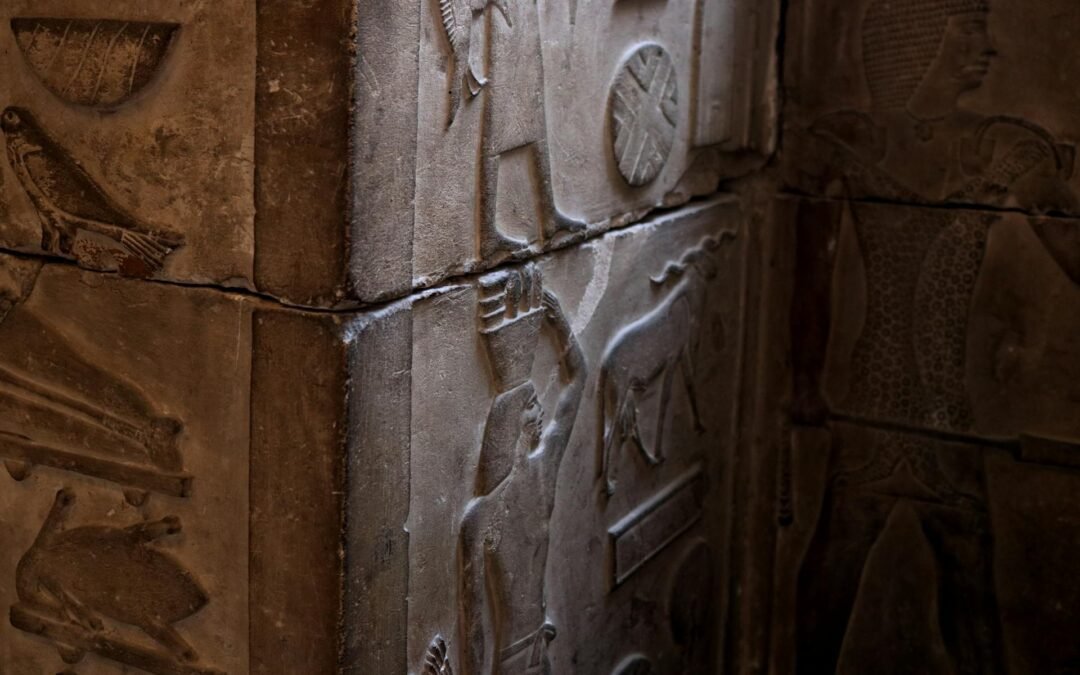The Ancient Egyptian language, a window into the soul of one of history’s most fascinating civilizations, offers an unparalleled glimpse into the past. This language, inscribed on monuments, scribbled on papyrus, and painted in tombs, has captivated scholars, historians, and enthusiasts for centuries. At Eddy Andrews Conceptual Copywriting, we’re intrigued by the power of language to connect us with ancient peoples, their thoughts, beliefs, and daily lives. In this blog post, we delve into the mysteries of the Ancient Egyptian language, exploring its evolution, significance, and the ongoing efforts to understand it.
The Evolution of the Ancient Egyptian Language
The Ancient Egyptian language is not a static entity but a dynamic tapestry that evolved over thousands of years. It can be divided into several stages, each reflecting different periods in Egypt’s history:
- Old Egyptian: Used in the Old Kingdom period, this stage is best known from pyramid texts.
- Middle Egyptian: Considered the classical stage, it was used during the Middle Kingdom and continued as a literary language into the New Kingdom.
- Late Egyptian: This stage saw changes in grammar and vocabulary, used in the New Kingdom and later periods.
- Demotic: Emerging in the Late Period, Demotic was a streamlined script for everyday use.
- Coptic: The latest stage of the language, using the Greek alphabet with some additional letters. Coptic is still used in the liturgy of the Coptic Orthodox Church.
The Significance of the Ancient Egyptian Language
The Ancient Egyptian language is more than a means of communication; it is a rich source of cultural, religious, and societal insights. Through texts such as the Pyramid Texts, the Book of the Dead, and various administrative and personal letters, we gain access to the Egyptians’ worldview, religious beliefs, and even their humor and emotions. The language also offers clues to the advancements of the Egyptians in medicine, astronomy, and mathematics, highlighting their sophistication and ingenuity.
Deciphering the Language: The Rosetta Stone
The breakthrough in understanding the Ancient Egyptian language came with the discovery of the Rosetta Stone in 1799. This granodiorite stele, inscribed with a decree in three scripts (hieroglyphic, Demotic, and Greek), provided the key to deciphering hieroglyphs. The efforts of scholars, most notably Jean-François Champollion, to translate the Rosetta Stone in the early 19th century, opened the floodgates to understanding Egypt’s ancient texts, transforming Egyptology and our understanding of ancient civilizations.
The Ongoing Quest to Understand
Despite significant advancements in deciphering the Ancient Egyptian language, the quest to fully understand this complex system continues. Modern technology, including digital imaging and machine learning, is aiding scholars in reading previously illegible inscriptions and discovering new texts. Each discovery adds another piece to the puzzle, enriching our understanding of Ancient Egyptian culture and society.
Conclusion
The Ancient Egyptian language is a bridge to the past, offering a fascinating glimpse into the life and legacy of one of the greatest civilizations on earth. Its study not only unravels the mysteries of ancient texts but also connects us with the human experiences of an era long gone. At Eddy Andrews Conceptual Copywriting, we marvel at the enduring power of language to preserve history, culture, and identity across millennia. The story of the Ancient Egyptian language is a testament to humanity’s quest for knowledge, understanding, and connection, reminding us of the profound impact of language on civilization’s journey through time.

